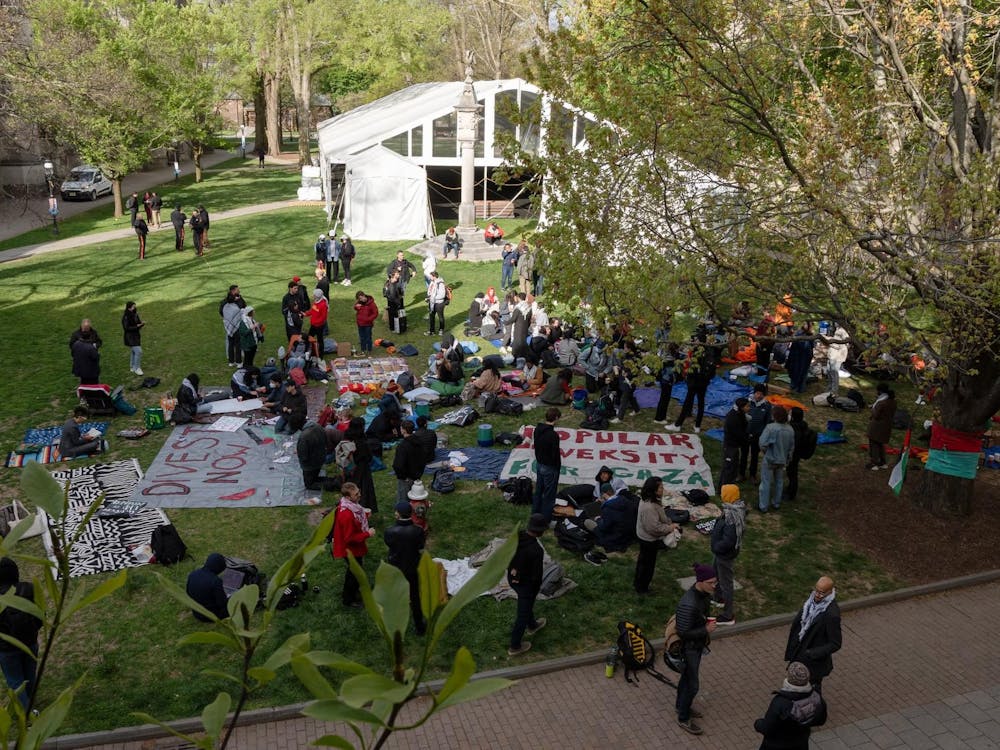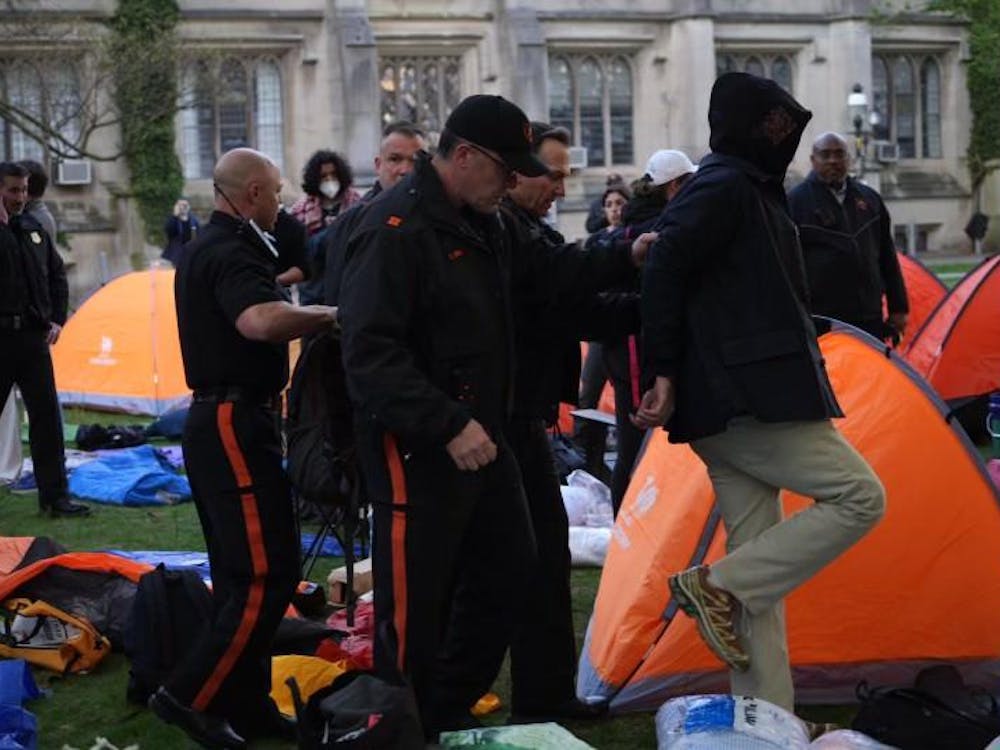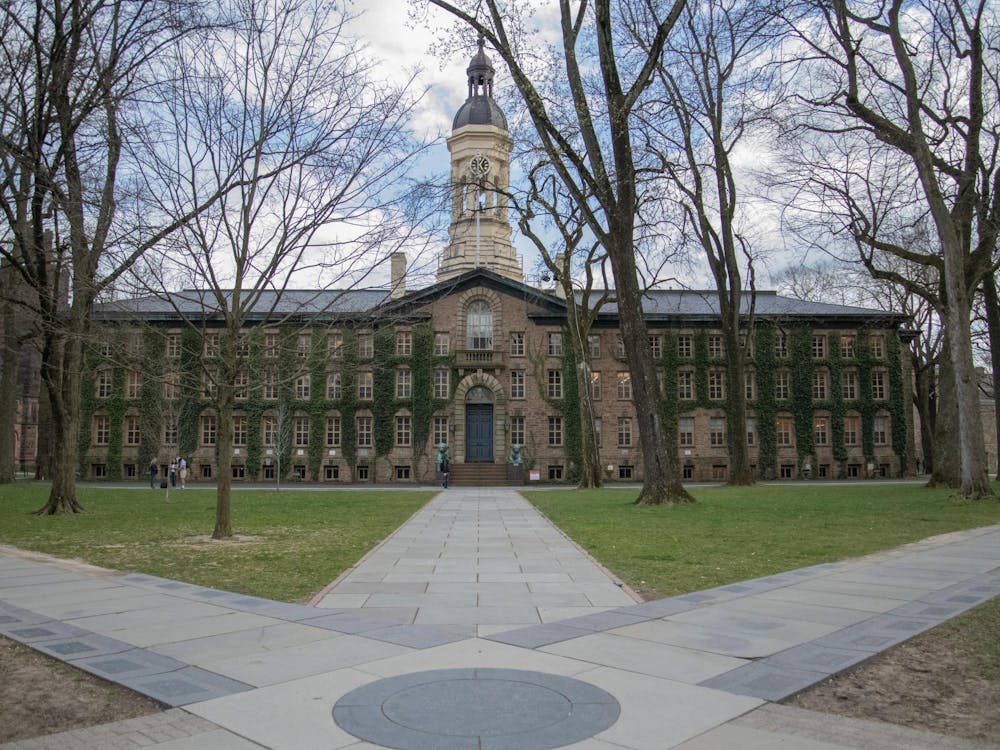“Design tells the story” is the type of lofty phrase an artsy friend might use while gushing about the supposed elegance of a paper clip lying on a white sheet of paper that has somehow been elevated to “work of art” level. Notwithstanding my skepticism over what constitutes art, the architecture of Yad Vashem, Israel’s official Holocaust remembrance center, frames not only the walls of the museum but also two key lessons which are ever relevant.
Over winter break, I visited Yad Vashem with “Caravan for Democracy,” a program generously funded by the Jewish National Fund and directed at helping non-Jewish American college students to better understand Israel. As we proceeded through the museum’s sobering depictions of sorrow and hate, I realized the building’s layout not only guided me through the physical plant, but also purposefully exposed and corrected my misconceptions about the Holocaust. Entering the bunker-esque museum through an opening perpendicular to the main hall, on a wall to our left was a movie playing vibrant, joyous scenes of Jewish life in pre-Holocaust Europe. To the right, stark concrete walls ran for a surprisingly short distance before ending at a sun bathed veranda that serves as the exit. “How can the story of the Holocaust be told in a mere few hundred yards?” I wondered. It quickly became apparent, however, that the main hall was not the path through the museum. Instead, visitors move in a serpentine pattern through rooms on either side of the main tunnel. The story of the Holocaust is told in roughly chronological order, before finishing at a spacious circular room filled with binder after binder after binder of remembrances of the millions who were murdered.
Moshe Safdie’s design crystalized my two primary takeaways from a powerful experience. First, looking back from our day, it is tempting to view the Holocaust as a straight line event, similar to the main tunnel of the museum. In reality, however, the story of the Holocaust twists and turns, without a coherent linear progression from the beginning to the end, much as the serpentine path through the exhibits conveys. Second, the story of the Holocaust is also a story of incremental separation. Not only were individuals separated from their families, but Jews, as a group, were physically and socially separated from society, and society from them, as part of a sinister effort which was crucial to Hitler’s ability to carry out his heinous objectives.
Hitler’s fanatical anti-Semitism did not have to end with the extermination of millions of Jews and others. His murderous intentions were not fully formed when he started spewing hatred as he gained power, and could have been stopped by a determined opposition, such as the resistance which led to the halting of euthanization and sterilization of the disabled in 1941. Though I was aware that part of Hitler’s quest for “racial purity” involved forced sterilization and euthanization of the mentally and physically handicapped, I was unaware that this program only ran from 1939-1941. As detailed by one of the exhibits at the museum, such atrocities were stopped because of vehement opposition by the churches. This was an example of a powerful institutional voice in German society speaking out against, and successfully putting a stop to, part of Hitler’s perverse ideology. Why didn’t the same outcry from moral authorities or other powerful segments of society come to the rescue of the Jews?
Part of the reason lies in ordinary Jewish people and their voices being gradually isolated from society. As the museum progresses through the events of the Holocaust, I was struck by the incremental steps taken to separate Jews from society, and society from Jews. Starting with anti-Semitic rhetoric, moving through boycotts and graffiti and destruction of Jewish businesses and places of worship, to forcing Jews to wear Star of David insignias on their clothing, to relocating Jews to ghettos, and finally to consigning them to concentration camps, the Nazi regime’s deviously shrewd manipulations all but eliminated interactions between average German citizens and individual Jews. As a consequence of this distance, when the ‘final solution’ was eventually implemented, most Germans possessed only indistinct memories of their former Jewish friends and associates.
People are particularly busy with multiple and competing concerns during times of war and social upheaval, and are thus more likely to focus upon issues which are both immediate and proximate. If, with no preliminary steps of separation having been implemented, ordinary Germans had witnessed a close female Jewish friend, with whom they had enjoyed a friendly dinner only a week before, being dragged from an upscale home by the Gestapo in the middle of the night and taken directly to Auschwitz to be murdered, they would have been more likely to intervene. But Hitler and his henchmen were more cagily sinister than that. Because the Jewish friend had been gradually removed from the orbit of German society through the forced wearing of Star of David on her dress for a year, then being sent to live in a ghetto for two years, before finally being sent to Auschwitz, Germans heard only small pieces of her plight and were too busy with other worries to act on unclear information affecting an acquaintance of long ago.
America is not without its ugly impulses, as we continue to be besieged by attempts to label religious, ethnic, and racial groups as “dangerous elements” within society, which are then separated them from us, and us from them. If we know and care about, and interact daily with, people whose groups are being unjustly demonized, then when significant persecutions arise our consciences will not permit us to stand idle and let the mundane demands of our busy lives give us the convenient excuse to do nothing. It is far too easy to find excuses not to act, to delay, or to downplay both the severity of the situation and our ability to facilitate change, but if we hear the cries of people we personally know and care about, we will be motivated to act. Injustice and atrocities never travel an inevitable path, and determined people of principle have both the moral authority and the political influence to stop them from staining the pages of history.
Sam Rasmussen is a Wilson School major from Salt Lake City, Utah. He can be reached at samuelwr@princeton.edu.









